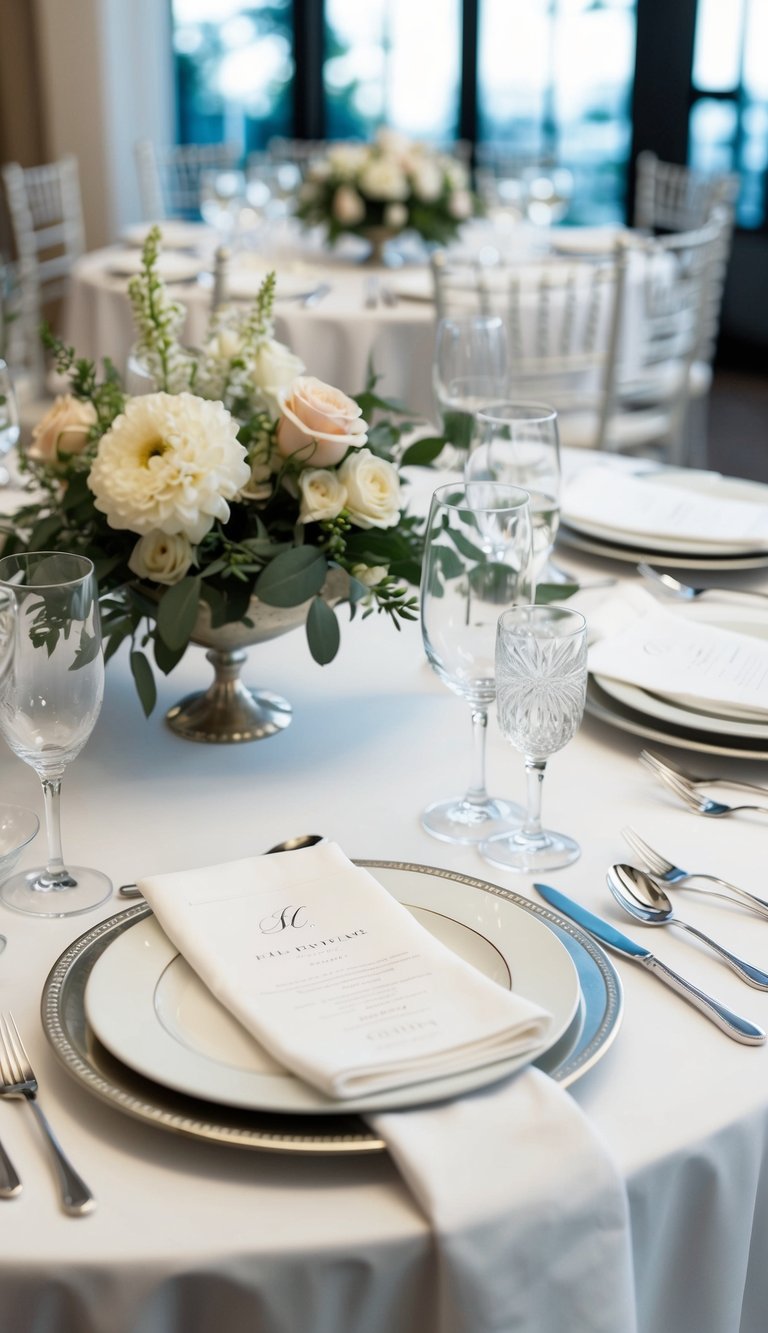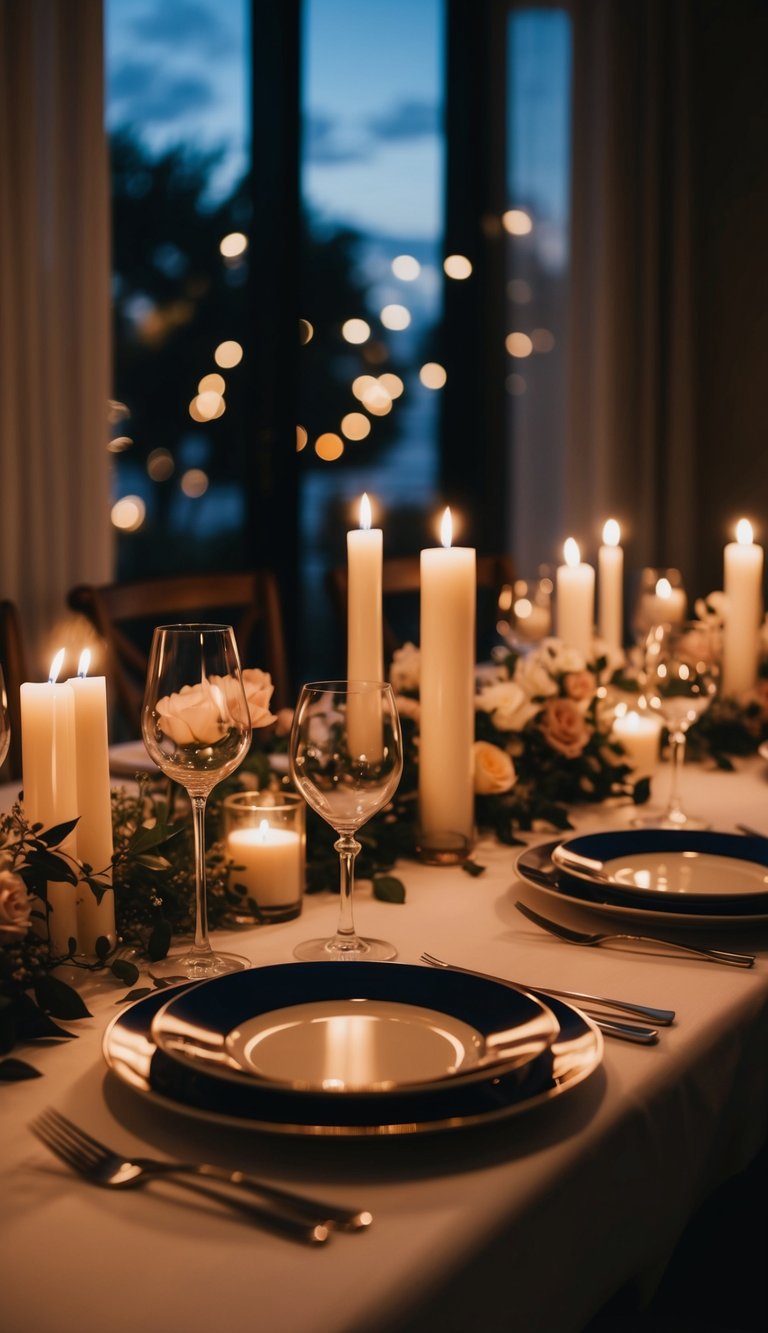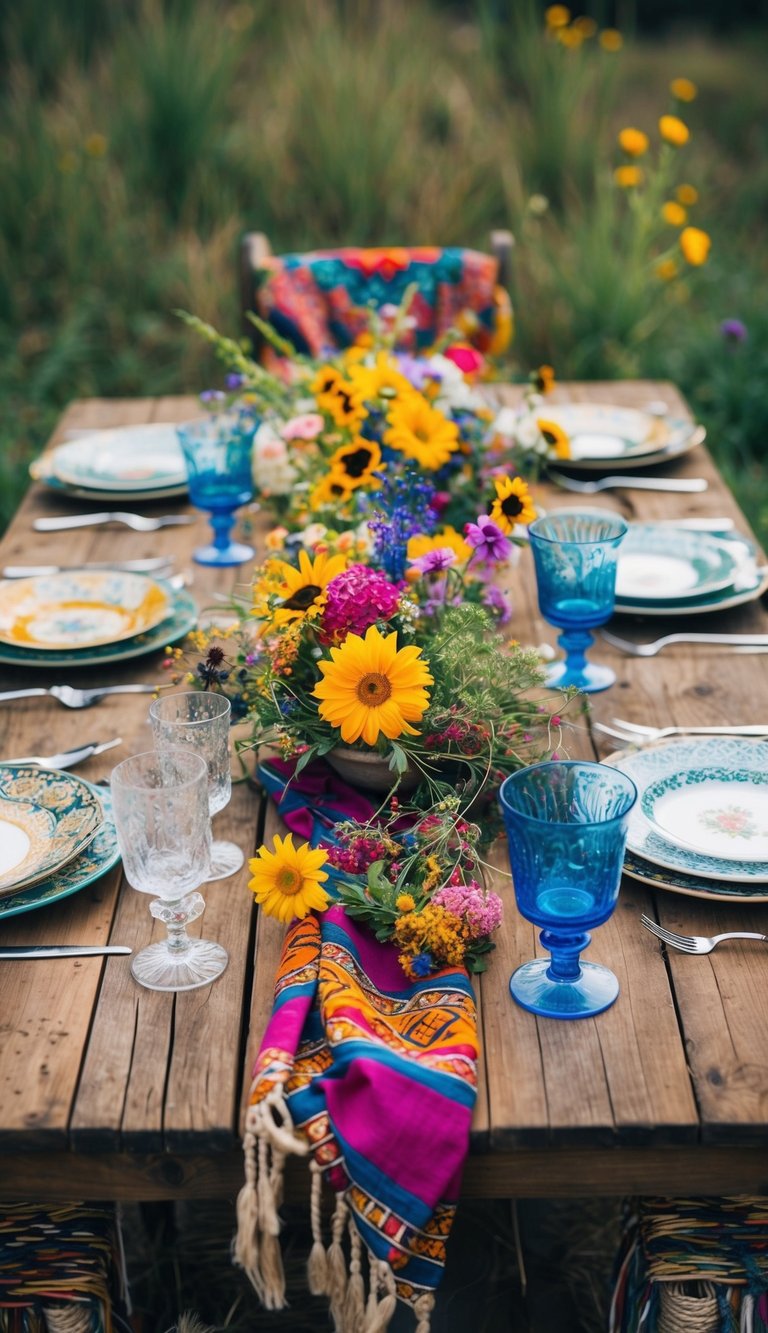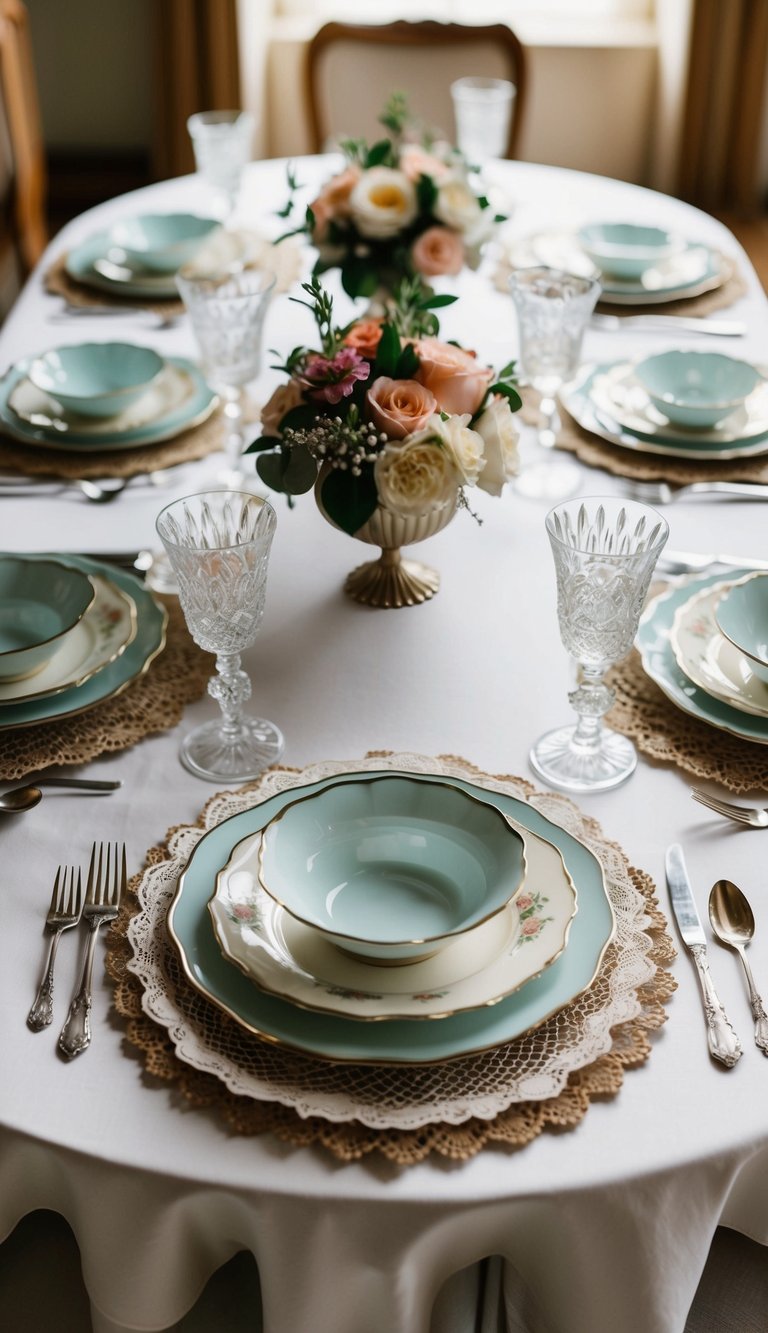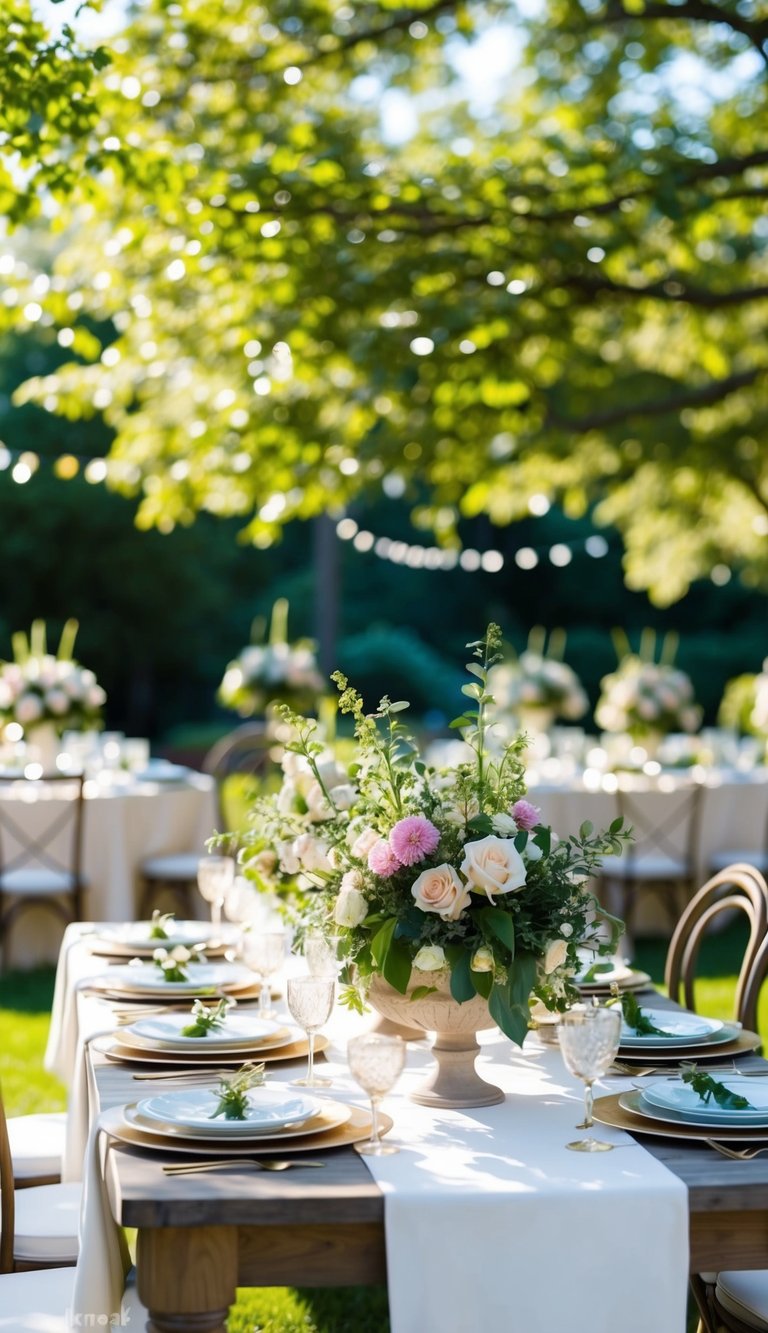10 Table Settings That Will Impress Your Dinner Guests
Table settings can transform an ordinary meal into a special experience. The right arrangement of plates, utensils, and decorative elements creates a welcoming atmosphere for your guests. Setting a beautiful table shows that you care about the details and want to create memorable dining moments.

Whether you’re hosting a casual brunch or a formal dinner party, knowing different table setting styles gives you options. You can keep things simple for everyday meals or go all out for holidays and celebrations. These 10 table settings will inspire you to get creative with your dining space.
1. Elegant white napkins
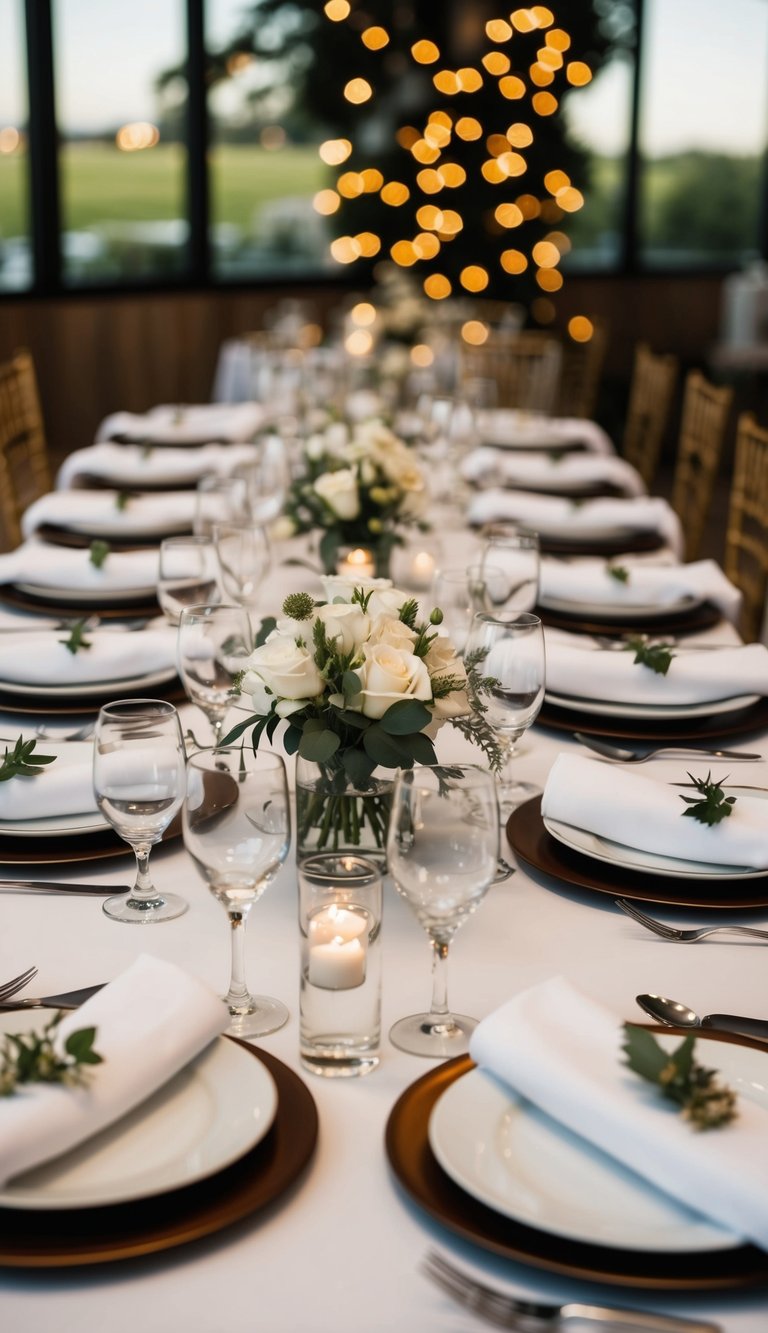
White napkins add a touch of classic elegance to any table setting. They work with any color scheme, making them a versatile choice for your dining table. You can use them for casual family dinners or fancy dinner parties.
The quality of your napkins matters a lot. Cotton or linen napkins look more refined than paper ones and are better for the environment too. You can wash and reuse them for years to come.
There are so many ways to fold white napkins to add interest to your table. A simple rectangle works for everyday meals, while fancier folds like the rose or bishop’s hat can impress your guests at special occasions.
White napkins also serve as a blank canvas for your creativity. You can add colorful napkin rings, tuck in fresh herbs, or tie them with pretty ribbons that match your table’s theme.
Remember to iron your white napkins before placing them on the table. This small step makes a big difference in how polished your table setting looks.
2. Gold-rimmed glass plates
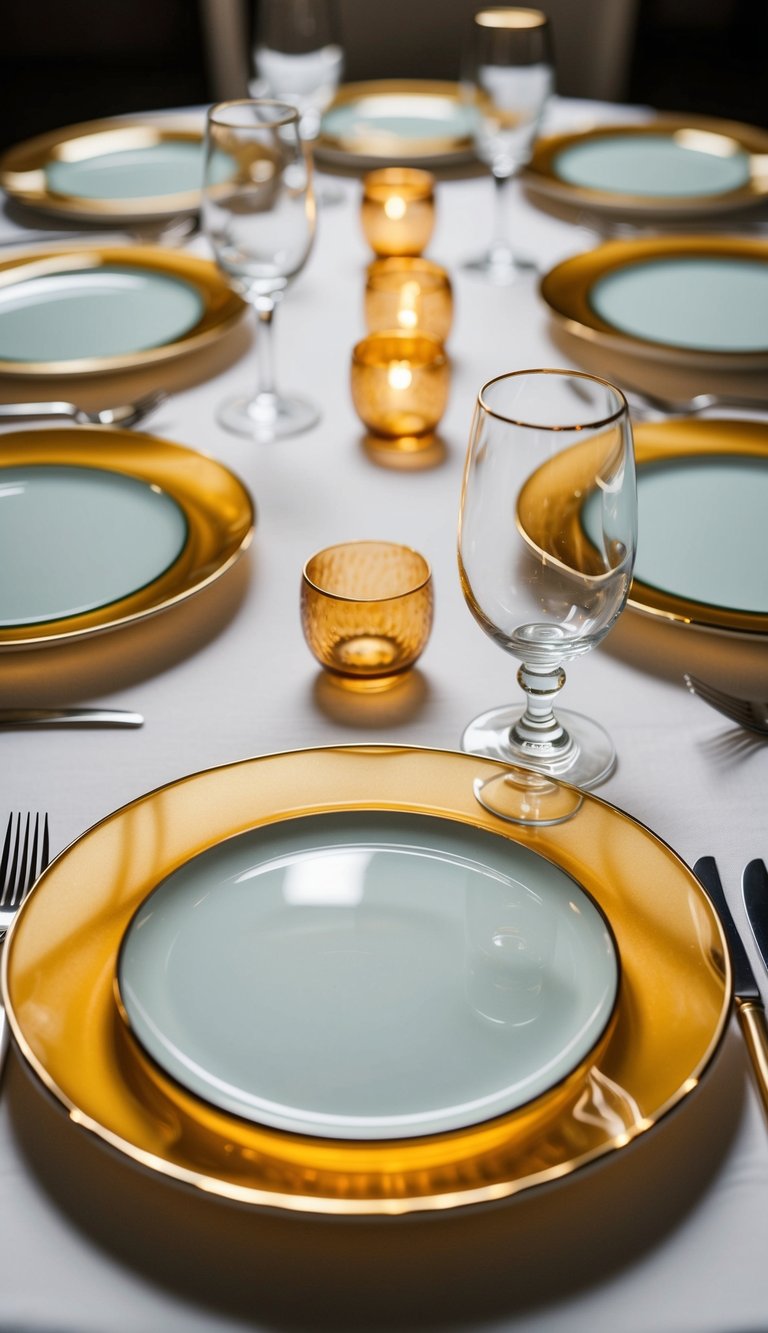
Gold-rimmed glass plates add a touch of elegance to any table setting. They catch the light beautifully and create a luxurious atmosphere without trying too hard. You can find these stunning plates in various styles, from minimalist designs to more ornate patterns.
These plates work wonderfully for special occasions like anniversaries, holiday dinners, or fancy dinner parties. But don’t be afraid to use them for a random Tuesday dinner—they’ll make even takeout feel special!
When pairing gold-rimmed plates with other tableware, you have lots of options. They look fantastic with gold cutlery for a coordinated look. Or try mixing them with silver elements for an interesting contrast.
Caring for your gold-rimmed plates is pretty straightforward. Hand washing is best to preserve the gold trim. Avoid the dishwasher, as the harsh detergents and heat can damage the delicate gold edges over time.
Price points vary widely depending on quality and brand. You can find budget-friendly options at home goods stores or invest in heirloom-quality pieces from luxury brands.
3. Crystal wine glasses
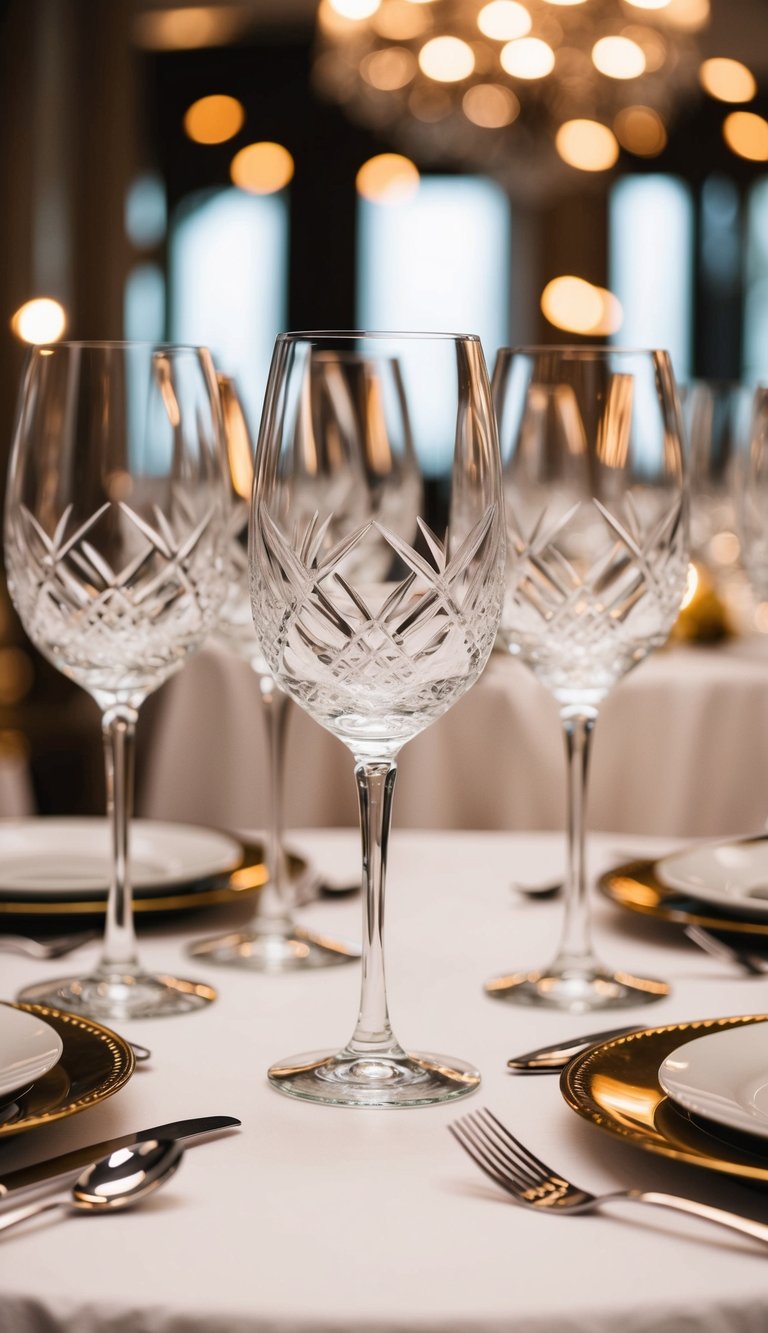
Crystal wine glasses add a touch of elegance to any table setting. Their delicate design and brilliant shine can transform an ordinary meal into a special occasion. You don’t need to save them just for fancy dinners!
When setting your table with crystal glasses, place them above the knife, slightly to the right. This standard placement makes it easy for guests to reach their drinks during the meal.
Crystal glasses come in different shapes for different types of wine. Red wine glasses have a wider bowl to let the wine breathe, while white wine glasses are typically more narrow and tall.
If you’re serving multiple wines, arrange the glasses in the order they’ll be used, from right to left. This helps your guests know which glass to use for each course.
For casual gatherings, don’t worry about having a complete matching set. Mix and match your crystal pieces for a relaxed, eclectic vibe that still feels special.
Remember to handle your crystal glasses with care when washing. Hand washing with mild soap is usually best to maintain their sparkle and prevent chips.
4. Silver cutlery set

Silver cutlery adds a touch of elegance to any table setting. These shiny sets can instantly elevate your dining experience from ordinary to sophisticated. When you invest in quality silver cutlery, you’re choosing both beauty and durability.
Proper arrangement matters when setting out your silver pieces. Place forks on the left side of the plate and knives and spoons on the right. The knife edge should always face toward the plate.
Silver requires special care to maintain its luster. You should wash it by hand with mild soap and dry it immediately to prevent water spots. Avoid leaving silver in contact with foods like eggs or mayonnaise, which can cause tarnishing.
Storage is equally important for keeping your silver cutlery in top condition. Consider using anti-tarnish cloths or bags designed specifically for silver. This prevents the need for frequent polishing.
For formal dinners, complete silver sets typically include salad forks, dinner forks, soup spoons, dessert spoons, and various knives. You don’t need to use every piece for casual meals – just select what’s appropriate for your menu.
5. Embroidered table runner
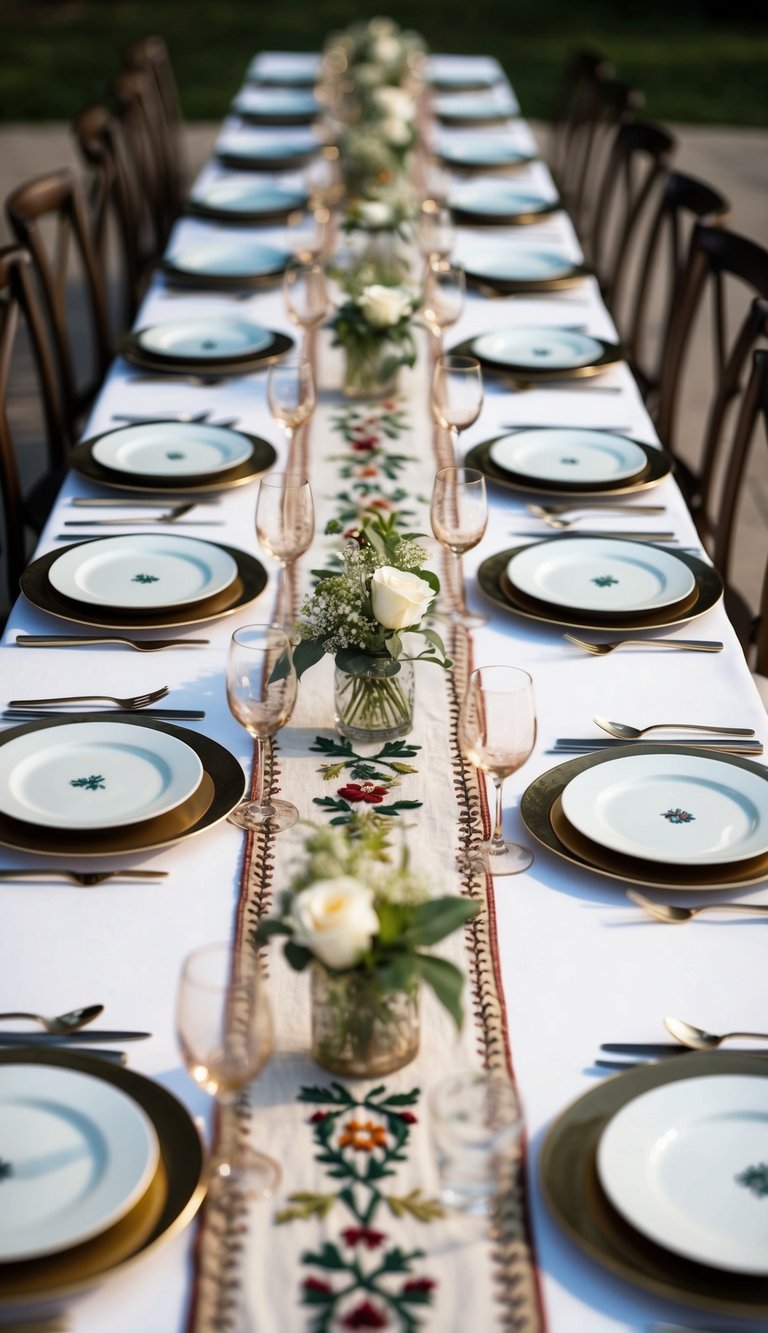
A table runner adds a pop of color and texture to your dining setup. When you choose an embroidered one, you bring an extra touch of craftsmanship to your table.
Embroidered runners work well for both casual and formal meals. You can find them with seasonal designs, floral patterns, or simple geometric shapes to match your style.
These runners are versatile enough to use year-round. For spring gatherings, try one with delicate flower stitching. During winter holidays, runners with festive embroidery create a warm atmosphere.
Place your embroidered runner down the center of the table. You can let it hang over the edges a bit for a relaxed look, or keep it centered for a more structured appearance.
For protection, put a clear mat underneath if you’re setting hot dishes directly on the runner. This prevents damage to the beautiful embroidery work.
When not in use, roll your embroidered runner instead of folding it. This helps preserve the stitching and prevents permanent crease lines.
6. Vintage candle holders
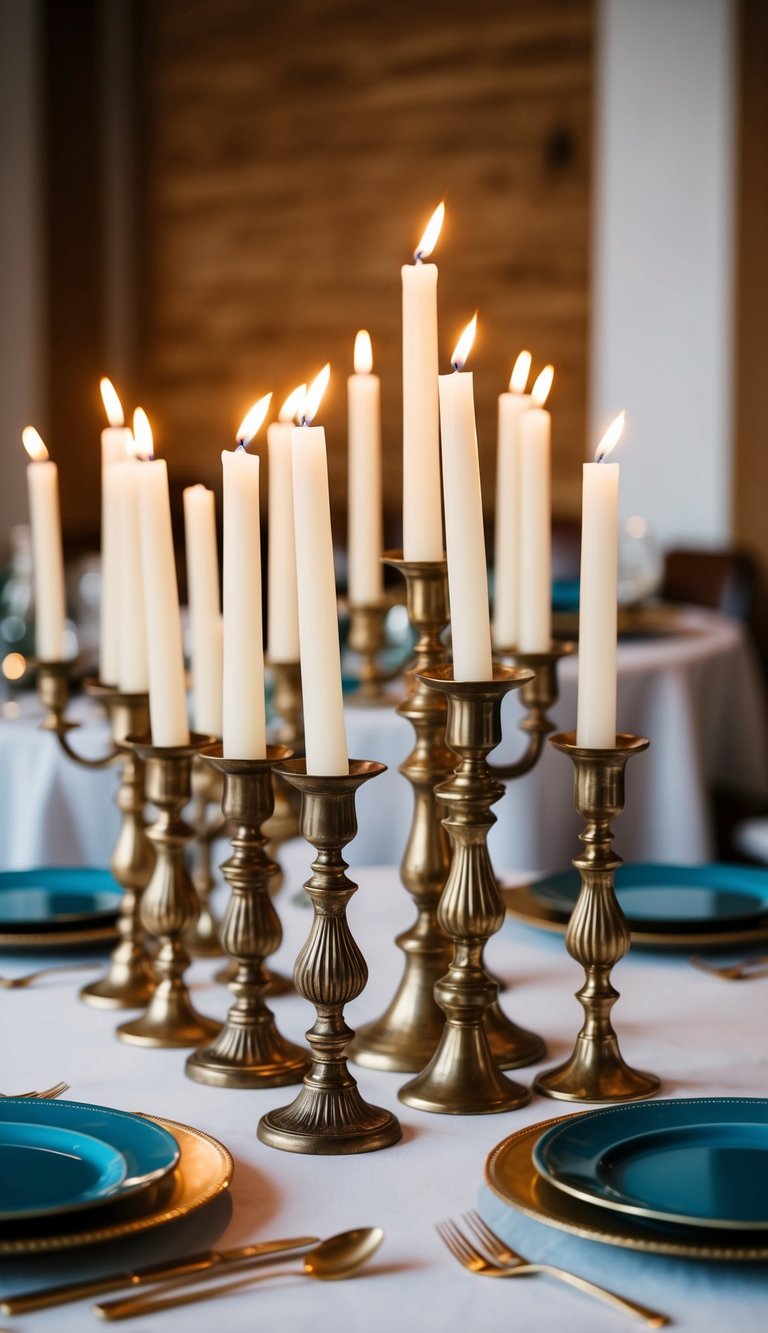
Vintage candle holders add a touch of nostalgia to your table setting. You can find these charming pieces at antique shops, flea markets, or even in your grandma’s attic. They come in various materials like brass, silver, crystal, or ceramic.
Mix and match different styles for an eclectic look. Try pairing ornate brass holders with simple silver ones to create visual interest. You don’t need a matching set to make an impact.
Tarnished silver or brass can actually enhance the vintage appeal. But if you prefer a shinier look, a quick polish will brighten them right up. Just be careful not to damage any patina that adds character.
Consider height when arranging your vintage candle holders. Varying heights create dimension across your table. You can place taller ones in the center and shorter ones around the edges.
Tapered candles look elegant in traditional holders, while tea lights work well in smaller vintage cups or holders. The warm glow from these timeless pieces will create a cozy atmosphere that your guests will love.
7. Floral centerpiece
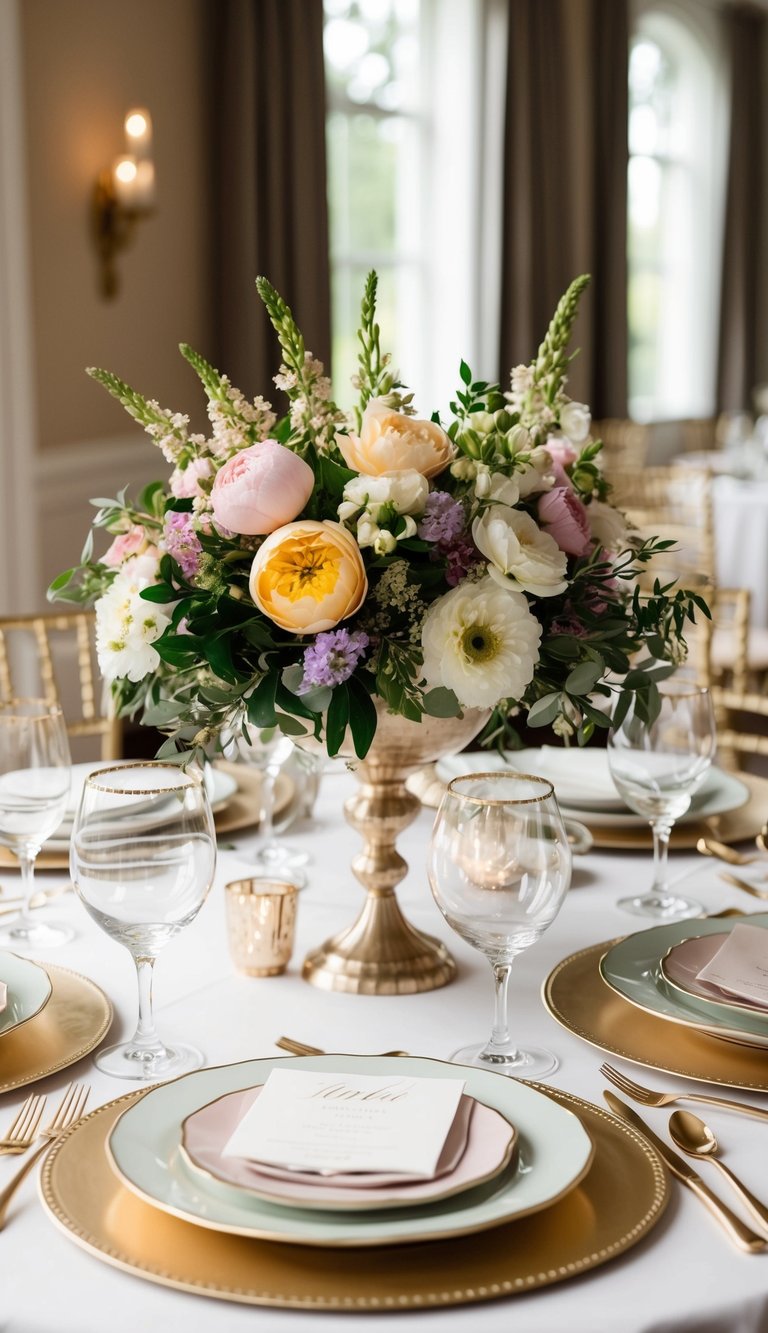
Flowers bring life and color to your table. A beautiful centerpiece creates a focal point that ties your whole table setting together. You don’t need to be a professional florist to create something special.
Choose flowers that match your event’s mood and color scheme. For casual dinners, a simple mason jar with wildflowers works perfectly. For formal occasions, you might want a lower arrangement so guests can see each other across the table.
Consider the season when selecting your blooms. Spring tulips, summer sunflowers, fall dahlias, or winter evergreens each bring their own charm to your table.
Height matters too. Keep centerpieces below eye level (about 12 inches) so conversation flows easily. Nobody wants to peek around a tall arrangement to chat with other guests.
Don’t forget about fragrance. Some flowers have strong scents that might compete with your food. Roses, carnations, and daisies offer beauty without overwhelming aromas.
If you’re on a budget, greenery with just a few blooms can look elegant and cost much less than arrangements packed with expensive flowers.
8. Linen tablecloth
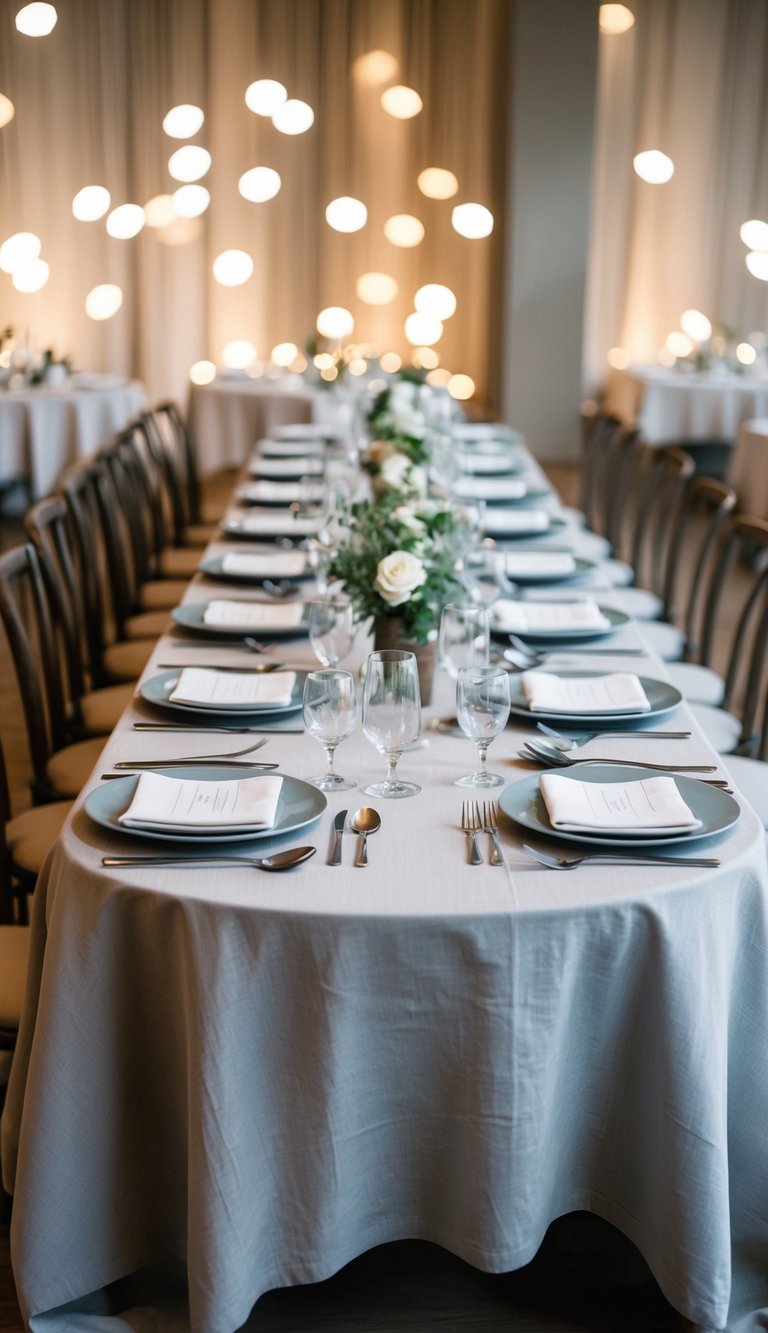
Linen tablecloths add a touch of elegance to any dining experience. They’re made from flax fibers, giving them a natural texture that feels both rustic and refined at the same time.
Caring for linen is easier than you might think. While it may wrinkle easily, these natural creases are part of its charm and character. Many hosts actually prefer the slightly rumpled look for a more casual, lived-in vibe.
You can find linen tablecloths in various colors, though neutral tones like white, cream, and gray remain the most popular choices. These versatile hues pair well with any dinnerware or seasonal decor.
For a more casual look, try draping your linen tablecloth so it hangs about 8-10 inches over the table edge. Formal settings typically call for longer drops, reaching halfway to the floor.
Don’t worry about small stains or spills. Quality linen actually becomes softer and more beautiful with age and washing. Just avoid bleach and opt for gentle detergents to maintain the fabric’s integrity.
9. Place card holders
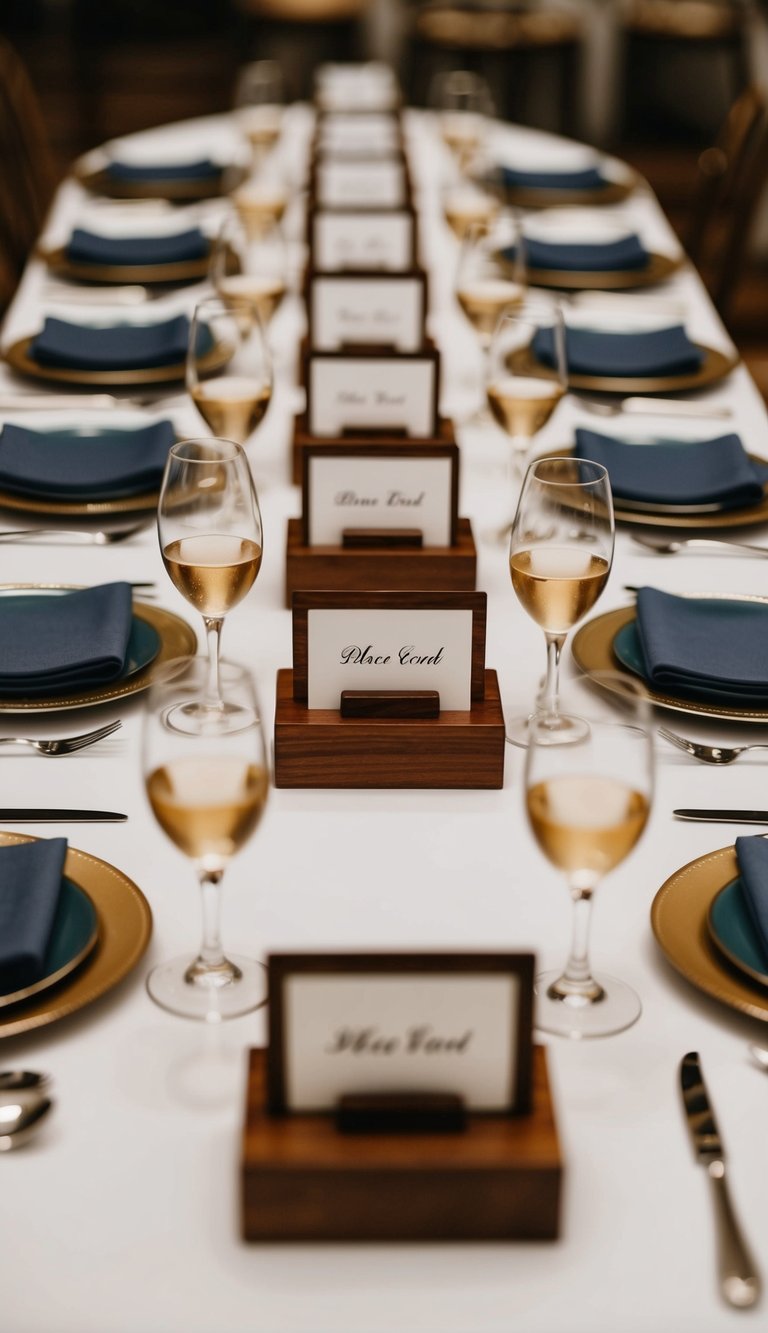
Place card holders add a special touch to your table. They help guests know where to sit and make your table look more organized. You can find them in many styles, from simple to fancy.
You don’t have to spend a lot of money on place card holders. DIY options work great too! Try using wine corks, small picture frames, or even folded cardstock.
For a natural look, pinecones or small potted plants can hold your cards. These double as little gifts for your guests to take home after the meal.
Match your place card holders to your overall table theme. For formal events, silver or crystal holders look elegant. For casual gatherings, something playful might work better.
Remember to write names clearly on your place cards. You can use calligraphy, printed labels, or just your neatest handwriting. Make sure the text is large enough for everyone to read easily.
Place card holders also help you plan seating arrangements. You can put people together who you think will enjoy talking to each other during the meal.
10. Decorative chargers

Chargers are the larger plates that sit under your dinner plates. They add a touch of elegance to your table without much effort. You can find them in various materials like metal, glass, or wood.
Gold or silver chargers bring a formal feel to special occasions like holiday dinners or anniversary celebrations. For everyday meals, try woven or wooden chargers that create a more relaxed vibe.
You don’t actually serve food on chargers. They stay on the table throughout the meal while your dining plates rest on top. This layering effect adds depth to your table setting.
When selecting chargers, consider your existing dinnerware colors. Contrasting colors make your plates pop, while complementary tones create harmony.
Seasonal chargers can refresh your table throughout the year. Think copper tones for fall, deep greens for winter, or bright colors for spring gatherings.
Don’t feel like you need to use chargers for every meal. Save them for when you want to make your table setting feel more special and put-together.
Getting Creative with Themes
Themes can transform ordinary table settings into memorable experiences that reflect your personality and the occasion. The right theme creates a cohesive look while allowing you to play with colors, textures, and decorative elements.
Incorporating Seasonal Elements
Seasonal themes offer natural inspiration for your table settings. In spring, try pastel-colored linens with small potted herbs as centerpieces. Add fresh flower petals scattered across the table for a touch of whimsy.
Summer tables shine with bright colors and fruit-themed accessories. Consider using lemon slices in water glasses or small bowls of berries as part of your centerpiece. Beach-inspired settings with shells, blue glassware, and sandy-colored napkins create a relaxed vibe.
Fall calls for warm earth tones like burnt orange, deep red, and brown. Mini pumpkins, colorful leaves, and cinnamon sticks make perfect accent pieces. Try wrapping napkins with twine and attaching a small pinecone for a rustic touch.
Winter table settings sparkle with silver, gold, and crystal elements. Pine branches, cranberries, and white candles create a festive atmosphere without much effort.
Mixing and Matching Styles
Don’t be afraid to blend different styles for an eclectic look. Combine vintage plates with modern flatware for an interesting contrast. This approach shows off your personality and creates conversation starters.
Try these mix-and-match ideas:
- Pair formal china with casual linen napkins
- Use different colored glasses at each place setting
- Combine patterned and solid plates in complementary colors
Family heirlooms can sit beautifully next to new purchases. That antique gravy boat might look perfect with your contemporary dinner plates. The key is finding a common element—like color or material—to tie everything together.
Thrift stores are gold mines for unique tableware pieces. You can find one-of-a-kind items that add character to your table. Even mismatched chairs can look intentional when unified by seat cushions in the same fabric.
Understanding Table Setting Etiquette
Table setting etiquette creates the foundation for enjoyable dining experiences. Knowing the basics helps you feel confident at any table, whether you’re hosting a fancy dinner party or setting up for a casual family meal.
Formal vs. Casual Settings
Formal settings include more pieces and follow stricter rules. You’ll see chargers (decorative plates), multiple forks, knives, and specialized glassware arranged in specific positions.
For a formal dinner, place the dinner plate in the center with forks on the left (working from outside in) and knives and spoons on the right. Wine glasses go above the knives, with water glasses to their left.
Casual settings are much simpler. You might just need a dinner plate, one set of utensils, and a single glass. No need for all those extra pieces!
Remember that napkins go to the left of the forks in formal settings or on the plate for casual meals. When in doubt, think: “work from the outside in” with your utensils.
Placement Tips for Utensils
Always arrange utensils in the order you’ll use them, working from outside toward the plate.
Fork placement: Put forks on the left side of the plate with the salad fork (smaller one) on the outside and dinner fork (larger one) closest to the plate.
Knife and spoon placement: Position knives on the right with blades facing the plate. Place spoons to the right of knives, with the soup spoon on the outside.
For dessert utensils, lay them horizontally above the dinner plate – fork with tines pointing right, spoon with bowl pointing left.
Space everything about an inch from the edge of the table. Don’t crowd the setting! Each diner needs about 24 inches of space for comfort.
